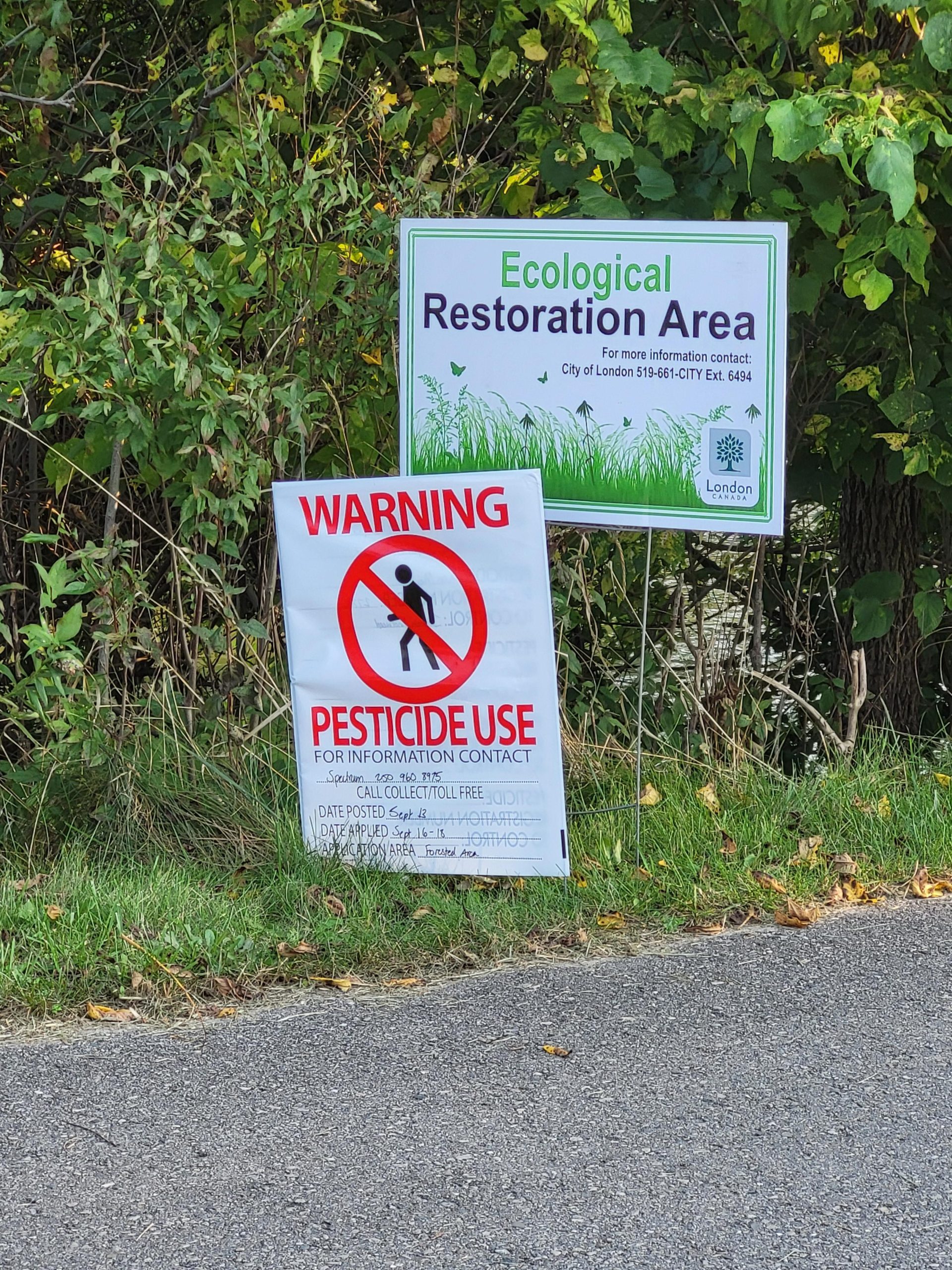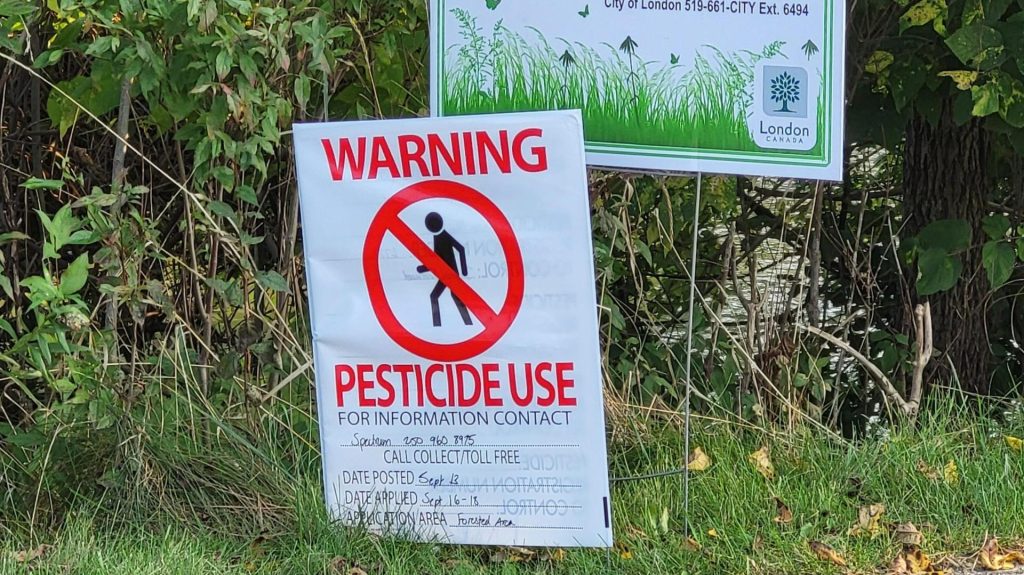If you’ve been wandering around London’s green spaces lately and spotted some rather puzzling signage, you’re definitely not alone. A recent online discussion has locals debating what exactly is going on with those seemingly contradictory ecological restoration signs that have been popping up around the city.

The signs in question feature a curious combination of messaging that’s left more than a few Londoners doing double-takes. Picture this: an area marked as “Ecological Restoration” sitting right next to warning signs about pesticide application. It’s the kind of visual contradiction that makes you stop and wonder if someone mixed up their paperwork.
But here’s where things get interesting – there’s actually a perfectly logical explanation behind what appears to be municipal confusion. According to those in the know, these signs represent a strategic approach to invasive species control that’s more common than you might think.
The herbicides being applied in these areas aren’t randomly sprayed chemicals designed to kill everything in sight. Instead, they’re targeted treatments specifically aimed at invasive plant species that have been wreaking havoc on London’s natural ecosystems. Think of species like European buckthorn, which has unfortunately made itself quite at home throughout the city, choking out native plants and disrupting local biodiversity.
One local whose brother works in fragmite control explained that this type of herbicide application is a regular part of maintaining healthy ecosystems. The process involves carefully targeting invasive species while preserving native plants – essentially giving the good guys a fighting chance against the botanical bullies.
The “Ecological Restoration” signage serves a dual purpose that’s actually quite clever. Not only does it inform the public about ongoing conservation efforts, but it also acts as a polite deterrent to keep people from trampling through sensitive areas. When you combine that with pesticide warning signs, you’ve got a pretty effective way to ensure both pets and people give these restoration zones the space they need to recover.
It’s similar to how wildlife management works with hunting quotas – sometimes you need to remove certain elements to maintain overall ecosystem health. In this case, instead of culling overpopulated animals, city crews are targeting invasive plants that threaten to overwhelm native species.
The strategy makes even more sense when you consider how invasive species operate. If native plants get trampled or damaged while they’re trying to re-establish themselves, invasive species are usually the first to jump in and claim that newly available space. Those warning signs help ensure that restoration efforts don’t get accidentally sabotaged by well-meaning nature lovers or curious dogs.
European buckthorn, in particular, has become such a persistent problem throughout London that targeted removal efforts like these have become essential for maintaining any semblance of natural biodiversity in urban green spaces. The shrub might look harmless enough, but it’s incredibly aggressive at crowding out native plants and can quickly dominate entire areas if left unchecked.
For residents who initially found these signs alarming, learning about their actual purpose tends to be quite reassuring. What looks like contradictory municipal messaging is actually evidence of thoughtful, science-based conservation work happening right in our backyard.
The naturalization efforts these signs represent are beneficial for every part of London’s ecosystem, from soil health to wildlife habitat. While the pesticide warnings might seem intimidating at first glance, they’re actually protecting both the restoration work and public safety.
Local discussion about these signs on Reddit helped clarify the situation for many residents who had been puzzled by the seemingly mixed messages.

